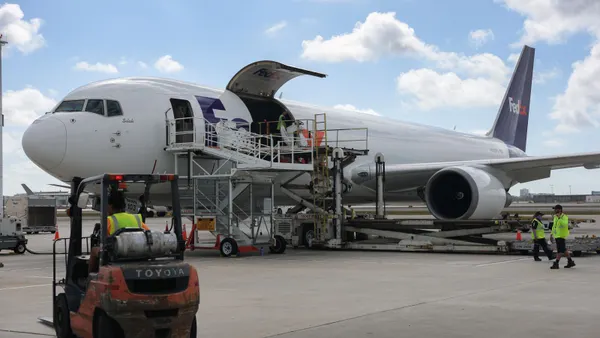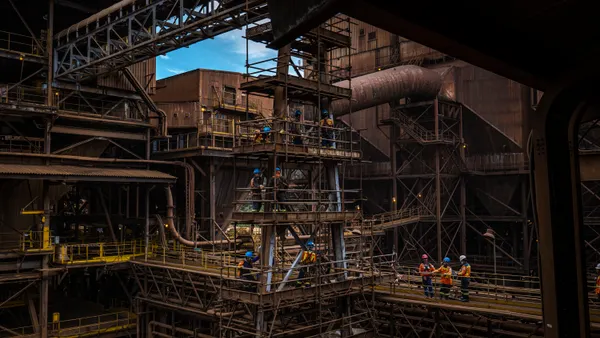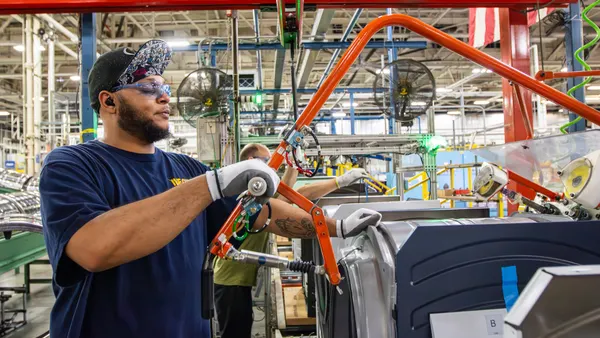This is a contributed op-ed written by Nader Mikhail, CEO and founder of Elementum. Opinions are the author's own.
COVID-19’s impact on supply chain was both immediate and apparent. Suddenly, shortages ran amok, from meme-worthy ones like toilet paper to more life threatening ones like personal protective equipment.
To ensure the industry never reenters that same tailspin, the U.S. government has proposed the Resilient Manufacturing Task Force Act, bipartisan legislation that will authorize $5 million of federal aid to fund a more "resilient" supply chain.
I wholeheartedly support a governmental initiative that both recognizes the long-standing challenges in the supply chain and also seeks to help our operators fight these challenges more effectively.
However, let me be clear: Resiliency got us to where we are today, and it is not the answer for the future.
To make supply chain and manufacturing more reliable and effective, we must discard the obsolete and ineffective resilient model, updating it with the modern and agile dynamic approach.
The 'resilient' model is so last century
The resilient supply-chain model operates from the flawed assumption that the quality of a supply chain is determined by its ability to bounce back from disruptions, such as pandemics or natural disasters. This model focuses on fortifying supply chain through a number of practices: stockpiling inventory, inshoring, and conducting lengthy audits, for example.
Each practice outlined by the resilient model is expensive, laborious, and has been recommended by "experts" for the past 20-plus years.
Resiliency got us to where we are today, and it is not the answer for the future.

In other words, they’re the same recommendations that most supply chains were following when the pandemic hit, thus sinking every preconceived notion of what "best practices" really mean.
Why doesn’t the resilient model work? Because it misses the fact that disruptions — pandemics, natural disasters — are not one-off events. They’re a constant presence in the industry and will only increase in frequency as climate change, geopolitical tension, nationalism and other calamities ensue.
Rather than trying to brace for the impact of the next crisis, supply chain needs to adopt an approach that contains practical, modern and easy-to-implement solutions.
The task force must focus on a dynamic approach
One of the task force’s main duties, according to the bill text, would be "to identify critical vulnerabilities in the supply chain of products and resources that are essential to the economic security of the United States, focusing in particular on vulnerabilities that have been exacerbated by the COVID–19 pandemic."
The legislation then lays out a plan for carrying out this initiative: Establish a group of industry volunteers who can help in a crisis, create a data-based system that supplies real-time information on the national supply chain in order to support them, and train more people for working in supply chain.
Strengthen the walls all you want — disruptions will always find a back door.

The task force’s overall mission is admirable. But identifying critical vulnerabilities in the supply chain won’t protect it from further calamity.
As someone who's worked in the industry for more than 15 years, I know that supply chain’s complexity, especially in these unprecedented times of change, makes it impossible to identify every weakness. Strengthen the walls all you want — disruptions will always find a back door.
Building an agile supply chain that responds to demands with real-time information allows practitioners to resolve each new incident, make adjustments to their supply chains based upon the feedback, and improve — no crystal ball or fortress-building necessary.
By applying a dynamic approach, the task force can redirect its energies toward the right solutions that ultimately support its goals. Instead of industry volunteers making the typical "resilient" recommendations of multi-sourcing, withdrawing trade from China, regionalization, supplier network mapping, and so on, they can focus on implementing sustainable, cost-effective solutions that understand supply chain’s need for an efficient and practical approach.
At the core of any dynamic supply chain are visibility, clear accountability and analytics:
- Visibility into supply-chain operations that provides a single source of truth and enables actionable insights.
- Clear accountability for understanding necessary changes and how to make them, including service-level agreements, automated notifications, and predefined workflow.
- Analytics that empower the supply chain with automated root cause analysis to make sustainable changes in both the long and short term.
I’m excited to see the U.S. government taking note of just how important supply chain is. The millions of operators out there deserve a helping hand, and we, as consumers, will certainly benefit, as well.
Supply chain management has never been easy, and it’s only getting more difficult. Instead of relying on the same resilient model that collapsed under the weight of COVID-19, let’s look to the future and start thinking dynamically.
This story was first published in our weekly newsletter, Supply Chain Dive: Operations. Sign up here.












